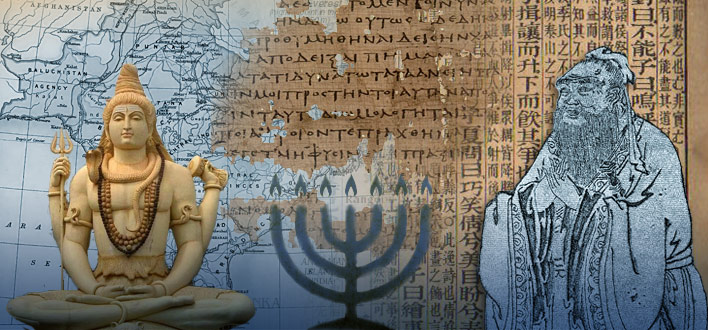
Axial Age Thought: Spiritual Foundations of Today
From 900–200 BCE a new mode of thinking developed almost simultaneously in four distinct areas of the world. In each area this was a time of change, social unrest, and political upheaval. People began to question their own beliefs once they came into contact with others whose beliefs were different. In the face of crisis and change, they were challenged to look at themselves in different ways and entertain new ideas or cling steadfastly to their old ones.
In 1949 the German philosopher Karl Theodor Jaspers coined the phrase “Achsenzeit” (“Axial Age” or “Axis age” in English) to describe a time between approximately 900–200 BCE when “The spiritual foundations of humanity were laid simultaneously and independently and these are the foundations upon which humanity still subsists today.”
It was a pivotal time in early human history when human beings began to reflect for the first time about individual existence, and the meaning of life and death.
Increasing urban civilization, initially brought about under the leadership of a priestly ruling class, encouraged trade and brought different societies closer together. But, as urban life accelerated and expanded, it disrupted the old sense of order. In addition, this new way of living generated unprecedented social and political conflict and an increase in violence and aggression.
Old customs could no longer be taken for granted. People began to question their own beliefs once they came into contact with others whose beliefs were different. They were challenged to look at themselves in different ways and entertain new ideas or cling steadfastly to their old ones. Plus the increase in population and the mixing of cultures exposed more people to the realities of life, such as, sickness, greed, suffering, inhumanity and social injustice. As a result of all this, people began to experience themselves as separate from others for the very first time.
The idea of the self brought with it the problem of what happens to the self after death. In answer to this, people began searching for more comprehensive religious and ethical concepts, and to formulate a more enlightened morality where each person was responsible for his own destiny. So, between approximately 900 and 200 BCE, a new mode of thinking developed almost simultaneously in four distinct areas of the world.
For each of these four areas this period represented a time of change, social unrest and political upheaval:
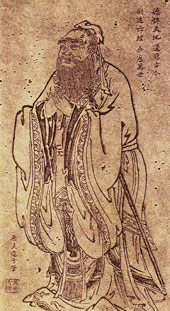
In China
The period of “warring states” began in approximately 550 BCE. The feudal system disintegrated and small principalities took over by force – Confucianism and Daoism began to develop.
In India
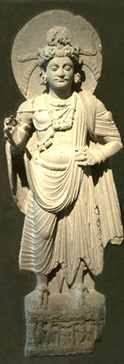
Political and economic instability was generated by the expansion of the Andronovo peoples into the Gangetic plains of Northern India in approximately 1000 BCE. There they began to settle in towns and became farmers and came in contact with non-Aryan peoples. Doubts began to take hold about the value of ritual, which was associated with the resentment of the middle castes to the Brahmin’s monopoly of religious practice. In the final analysis, people began to question whether this ritual practice was worthwhile. Arising doubts can be seen in the Upanishads whose authors wrote of the search for ultimate truth and the meaning of life and death. Their work led to Hinduism, the teachings of the Buddha and Mahavira and the first major international religion, Jainism.
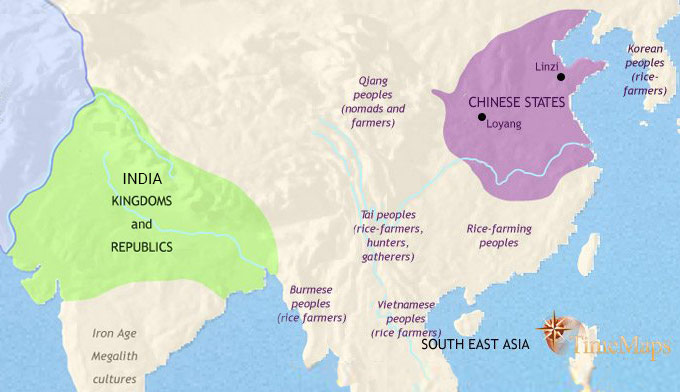
In the Middle East
The small states of Judea and Israel were imperiled by the threat of engulfment by surrounding empires. Similar ideas are developed by the prophets such as Elijah, Isaiah, and Jeremiah.
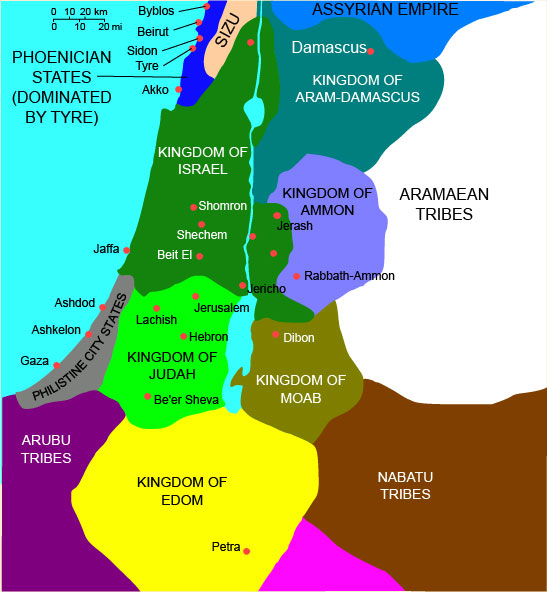
In Europe: Northern Mediterranean
The fifth century BCE saw upheaval in Greece as well. Yet it was also an extraordinarily creative time when Axial-Age Greece came into its own, and the great monuments, the art, philosophy, architecture, democracy and literature that we now value as the beginnings of our own Western civilization came into existence.
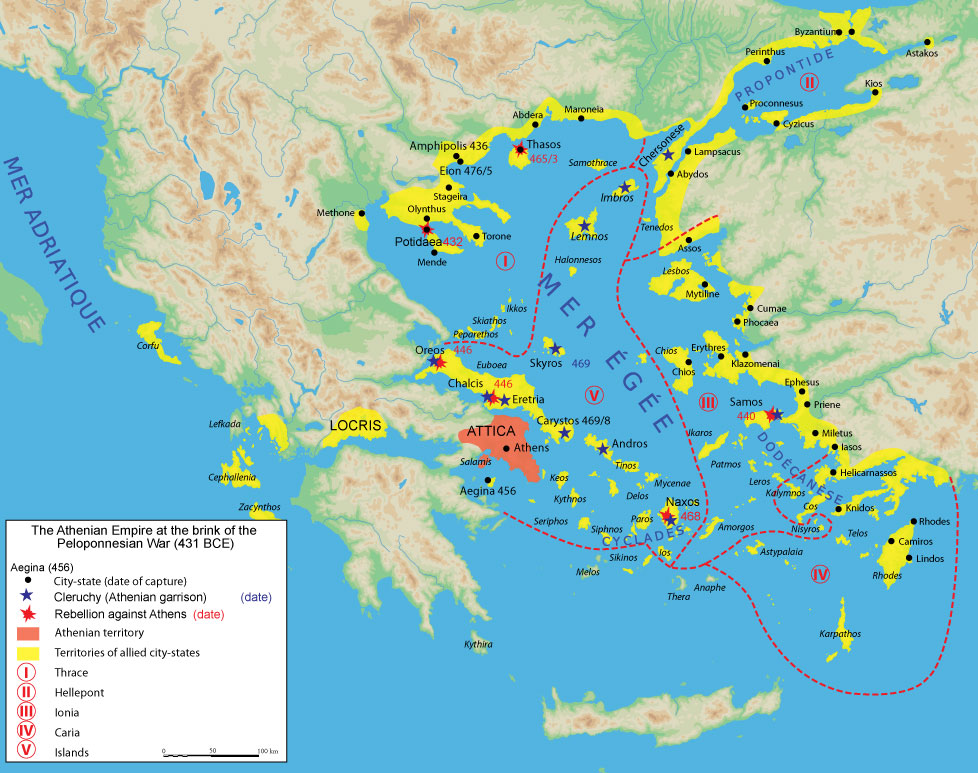
In the series: Spiritual Foundations of Today
Related articles:
- Birth of the Old Testament
- The Jewish People
- The Axial-Age Prophets
- The Babylonian Captivity
- Hinduism
- Buddhism
- Zoroaster
- Greece: The European Axial Age
- The Peloponnesian War 431BC – 404BC
- Religious Life in the Greek Axial Age
- Religious Life in the Greek Axial Age (Part 2): The Mystery Cults
- The Panhellenic Games
- The Theater of Ancient Greece
- The Pre-Socratic Philosophers
- Socrates (470–399 BCE)
- Aristotle (384–322 BCE)
- China
- The Spring and Autumn Period (770–476 BCE)
- The Hundred Schools of Thought
